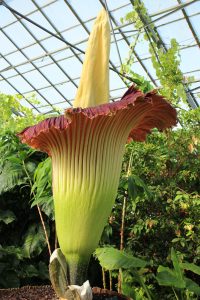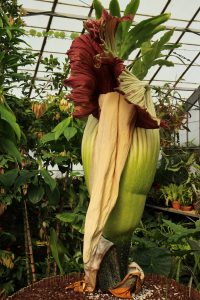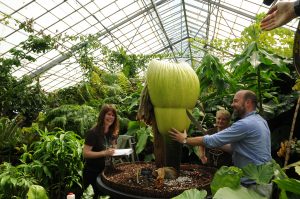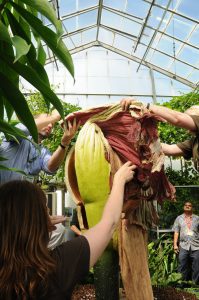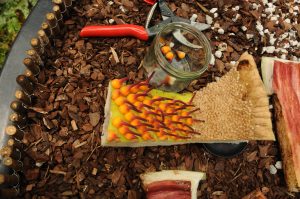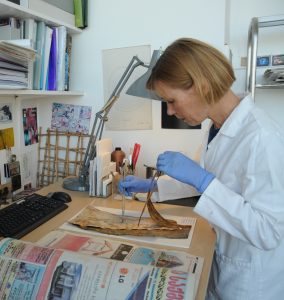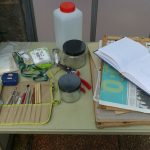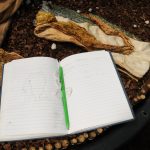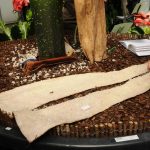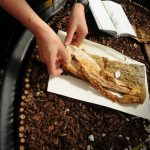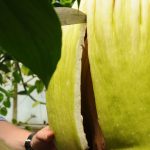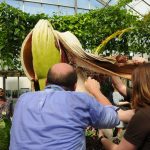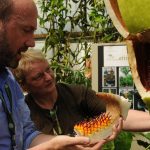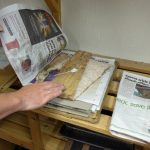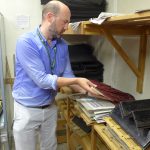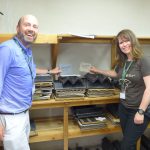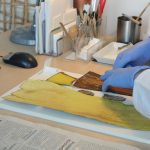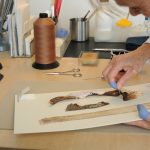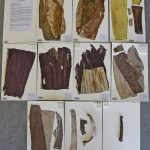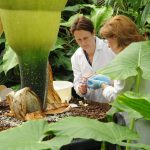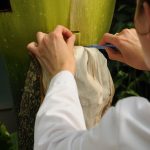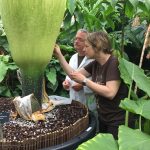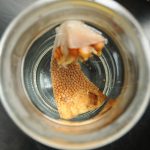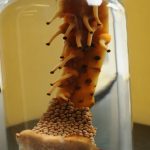The flowering of our Amorphophallus titanum (titan arum) was a tremendous event with c 19,000 people visiting the Glasshouses to see the plant growing from a small bud to a massive 2.6 metre inflorescence. As the flower began to fade and flop we took the opportunity to collect important parts of the plant and preserve it for posterity.
On 3rd July a small team representing Science, Horticulture and the Herbarium- eagerly observed by a larger crowd of visitors, press and in-house photographers- gathered and started to make the collection.
Peter Wilkie, a tropical botanist at RBGE was particularly keen to take part as he is travelling to Sumatra, the home of the Amorphophallus, early next year. “It is great to get the opportunity to study this plant close up and to record its fascinating features in detail. This is helping us understand how it interacts with its natural environment and the conservation measures needed to protect this amazing species”.
Lesley Scott, an Assistant Curator in the Herbarium, was delighted to be involved with making the herbarium specimen: taking material from the living plant, drying and pressing the collections made, collating the crucial label information, giving it a unique identification number (barcode), making a high resolution digital image, finally incorporating it all into the Herbarium Collection and making it available on our online Herbarium catalogue. “Our oldest specimen is from 1697 and this will be our newest specimen. It will join our other 3 million specimens including that of the titan arum from 1891 donated by Kew and will be available to study by both botanists here in Edinburgh and also around the globe.”
Fiona Inches, a Glasshouse Supervisor, who had nurtured the plant through the whole of its growth period was very happy to allow herbarium material to be taken, “it’s great to know that although our first flower has now died back, it lives on in the herbarium for future generations to study and marvel at, in the same way we have enjoyed the illustrations and voucher specimen from the first plant in cultivation almost 125 years ago”.
In addition to the herbarium specimen, material was collected for DNA analysis, pollen studies and distribution to other gardens, and the spirit collection.
Post written by Lesley Scott
See the gallery below for more images of the specimen being collected.
- P1010782
- Amorph coll book
- Amorph splitting spadix for specimen
- Amorph sizing for sheet
- Amorph spathe section for specimen e1439302327993
- Amorph removal of spadix 2
- Amorph removal of flowers
- P1010831
- P1010850
- P1010860
- Mounting 4
- Mounting 6
- RBGE Amorphophallus Herb specimen 2
- DSC 8240 e1439366064747
- Amorph DNA 2 e1439302243810
- IMG 0852
- Close up male flowers spirit 1
- Flowers in spirit

